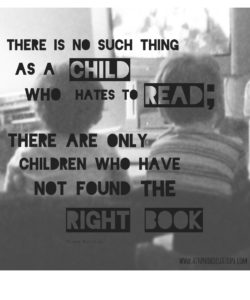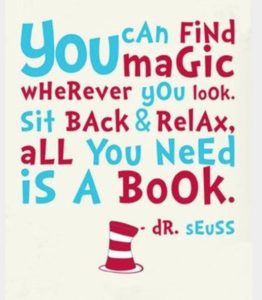3 Types of Texts that help Children Become Readers
August 31, 2017
I have met plenty of children and young people who love reading and I have also met children who don’t love reading. Often, but certainly not always this dislike of reading has stemmed from early difficulties with reading. The difficulties may have been resolved but for some children who struggled when they were learning it may take a long time before they actually enjoy reading.
However I don’t think I have met a child, or even adult for that matter who doesnt love a good story.
As I’ve mentioned in previous posts reading is an essential skill for children to learn AND it is not a natural or innate skill. Unlike speaking, which children in every human society learn, the skill of reading is an additional skill and therefore needs to be taught explicitly. We also know that English can present some complexities when it comes to learning to read, there being 26 letters but 44 commonly used sounds, unlike other languages where there is a much more consistent sound spelling correlation.
But as parents we want our children to develop this vital skill and to do that they need access to three different types of texts which all serve slightly different purposes when children are learning to read and progressing towards being fluent independent readers.
Stories for Fun
Hopefully even as babies and toddlers picture books and stories are read to and with children and they can be a great source of learning. Learning may come from the content of the stories themselves and the discussion that may follow the story but in addition children learn the pattern of stories, they learn that books can be fun and as they grow they learn that the text is related to the pictures, regardless of whether they can decode the text. It’s a great idea to get children to talk about the story, what might happen next, point to the pictures or detail within the pictures. This all aids their understanding of stories. New vocabulary will be learned from books and stories as well. In fact children over the age of 7 learn most new vocabulary from books rather than from speech so it is vital that children learn to read effectively. English is a rich language with a very large number of words relative to some other languages, think about the number of words we have that mean feeling or showing pleasure –
Contented, Content, Cheerful, Cheery, Joyful, Jovial, Gleeful, Carefree, Untroubled, Delighted, Smiling, Glowing, Satisfied, Radiant, Sunny, Blithe, Good humoured, Blissful, Euphoric…..and you could probably think of a few more.
If we were writing we’d chose which particular word to use depending on the context and personal preference and while we’d all be able to read and understand the words if we read them in a book, many are words that we wouldnt use often in everyday speech.
When children are learning to read themselves it is vitally important that they continue to enjoy stories with adults that are beyond what they themselves could read. When a child is first learning to read they need to decode each word so the books are simple and ideally should use only the sounds/spelling correspondences that the child has learned – see section below on coded stories. In fact until the child is a fluent reader their reading development will be enriched by having stories read to them that they will be able to comprehend but would not necessarily be able to read. Experiencing challenging texts with support may be good for the developing reader but being expected to read books or words that they haven’t the skills or knowledge to do effectively is likely to put them off, or force them into a position where they are guessing which in many ways undermines their learning as they may guess correctly sometimes but not others and that can never be a foundation for good reading.
A mistake that many parents make is to stop reading to children too early. They may be able to read the individual words but imagine if you were reading a complicated text where you were having to really concentrate to get the thread of the argument, often I imagine you’d read a sentence more than once to be sure you’d got it right. It is hard for a child to follow the plot of a story when they need to decode some of the words but you want them to enjoy the story so a mix of books is essential. Stories they can enjoy listening to and stories they can read themselves.
It is also useful to share reading stories with children who are learning to read so they read a page or even a sentence or two but an adult reads the rest.
The message is to keep reading to children even when they are starting to read themselves. Different books serve different purposes but reading to children will almost always be of benefit.
Books for Information
I have used the word books but really I mean text and this may be in a book or a magazine or indeed on the internet. It is all reading. A child may be willing to put in considerable effort to read some information on a computer game. The important thing is that they can see text as a source of information. There are some great non-fiction books and one of the advantages is that often the text is in short chunks like in example below which is form the Natural History Museum website. Again they may need help with some of the words if they are still learning to read but in a short piece of text when they are wanting to find something out it is great to let them read the words they can.
“Diplodocus had a long neck that it would have used to reach high and low vegetation, and to drink water. There has been some debate over how such a long neck would have been held.”
Coded Phonic Books
These have improved dramatically over recent years and there are now an ever increasing number of coded stories with great illuatrations, attractivley designed and with specific information for parents about the sounds/spellings that are being focussed upon. But I have heard people criticise them – often for the very thing they are intended to do.
The nature of a coded book is to use restricted text – that is only words the child has been taught how to decode, using sounds spelling correspondences they have been introduced to. So in the early days of learning to read they will be repetitive as there are only a restricted set of words that can be used. Even as they progress the purpose is usually is for them to practice reading a particular spelling or spellings for a sound. So a child who has learned some of the different ways we spell the sound /oe/ the sound as in the word ‘so’ might well read words like go, boat, show, note, and though, which all spell the sound in a different way.
Using coded phonic books is essential to support reading development, if your child is bringing home books to read themsleves (as distinct from stories to have read to them or share with an adult) that are not coded I would advise talking to the teacher about why coded phonic books arent being used.
Free Course
Sounds-Write have now produced a brilliant free course for parents which is available on Udemy. If your child is in school and learning to read or about to start school this a great resource of parents – you can complete it at a time to suit yourself but it will definitely help you to understand what your child isbeing taught in phonics at school and why. It will also enable youto offer them great support with their reading and writing. You can have a look by clicking here.




